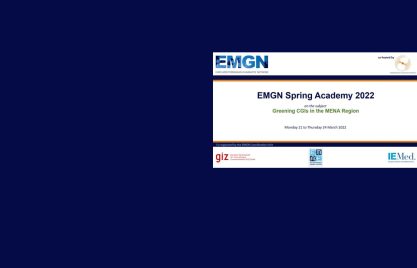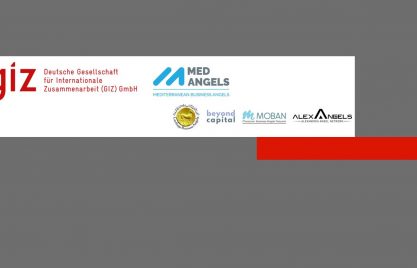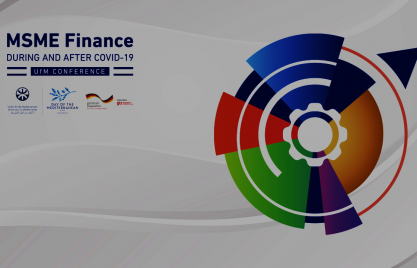Womens’ participation in the financial system has significant benefits for economic growth, greater equality and social well-being. However, few national strategies have women’s financial inclusion as an explicit objective and policymakers need to address societal issues that are leaving women behind.
Women’s financial inclusion is increasingly gaining attention on the global agenda. Research shows that when women—50% of the world’s population—participate in the financial system, there are significant benefits in terms of economic growth, greater equality and societal well-being. Even though there were significant advances in financial inclusion for both men and women between 2011 and 2014, women still lag behind in access and usage of financial products and services.
The disparity is because women face barriers to accessing financial products and services, such as limited financial literacy, lack of assets for collateral, geographic distance from a financial institution, lack of formal identification and limited ownership of mobile phones.
 How can policy makers and central banks address these barriers and create more conducive environments for the financial inclusion of women, in particular? Well, they can begin by examining the financial inclusion strategies of several countries who have taken steps to “fine-tune” an enabling environment for women. Women’s World Banking Chief Knowledge and Communications Officer, Karen Miller, shared how these countries are creating policies that won’t leave women behind at the High-Level Policy Forum on “Advancing Women’s Financial Inclusion in the Arab World” in Jordan. She was joined by the CEO of the Jordanian Bank Al Etihad who shared how it targets women clients to grow its business and drive greater financial inclusion.
How can policy makers and central banks address these barriers and create more conducive environments for the financial inclusion of women, in particular? Well, they can begin by examining the financial inclusion strategies of several countries who have taken steps to “fine-tune” an enabling environment for women. Women’s World Banking Chief Knowledge and Communications Officer, Karen Miller, shared how these countries are creating policies that won’t leave women behind at the High-Level Policy Forum on “Advancing Women’s Financial Inclusion in the Arab World” in Jordan. She was joined by the CEO of the Jordanian Bank Al Etihad who shared how it targets women clients to grow its business and drive greater financial inclusion.
It is important to “learn best practices from the thirty countries which have established financial inclusion strategies” – Karen Miller, Women’s World Banking
Recognizing that financial inclusion can lead to stronger economies, more and more countries are implementing national financial inclusion strategies. Two years ago, seven countries had national financial inclusion strategies; today more than thirty countries, including Jordan, have followed suit.
The Central Bank of Jordan launched its national financial inclusion strategy at the Forum. It has set a national goal of increasing financial inclusion from the current level of 24.6% (according to the 2014 Global Findex) to 36.60% by 2020 and, over the same time, to reduce the gender gap in the Kingdom from 53% to 35%. If Jordan’s vision is realized, this would expand Jordan’s GDP by up to 5%.
Research has shown that measures to increase financial inclusion for women need to be country-specific, based on each country’s specific gender gap and challenges. However, the financial inclusion strategies of other countries can be emulated, adapted and integrated into financial inclusion and other policy initiatives, and potentially eliminate the persistent gender gap in financial inclusion.
Government and financial policy makers can take action in the following areas to positively affect women’s financial inclusion.
- Call greater focus to the value proposition of women’s financial inclusion with clear policy objectives and quantitative targets. Many countries have quantitative objectives for financial inclusion overall, but if they have a persistent gender gap, they need an explicit target for women.
- Ensure financial institutions are collecting gender-disaggregated data. Without data, banks aren’t even aware of the significant business case women represent. When Bank Al Etihad began to use gender-disaggregated data, it found that women represented excellent clients and saved significant amounts for their children and family. The Bank launched “Shorouq“, a women-focused program in 2014 and the total women’s portfolio grew by 142 percent. Today, 30% of Bank al Etihad’s client base are women.
- Reform legal and regulatory frameworks that disproportionately affect women, such as ID or Know Your Customer (KYC) requirements.
- Develop financial infrastructure that encourages private sector innovation, as well as the creation of collateral registries and credit bureaus.
- Strengthen financial consumer protection regulation and expand outreach to ensure women understand the products and services. Bank al Etihad not only provides the financial products and services but also provides non-financial solutions that can better help women understand their products as well as grow their businesses. These non-financial services include quarterly networking events, entrepreneurial training workshops, mentorship and coaching, and a dedicated portal.
- Invest in financial education and literacy programs for women
- Influence legislation that addresses the social norms that hinder women’s financial inclusion
Thanks to the action of regulators in several countries, progress has been made in most of the policy areas, and they represent positive examples for the rest of the world. However, few national strategies have women’s financial inclusion as an explicit objective, and policy makers need to be more active about addressing societal issues that are leaving women behind. Regulators along with the private sector, donors and global organizations all have roles to play in building a more inclusive world, and many stakeholders agree: now is the time to make it happen.
By Karen Miller, Chief Knowledge and Communications Officer at Women’s World Banking
For more examples of promising policy solutions to help close the gender gap in financial inclusion, please consult the joint AFI – Women’s World Banking publication about “Policy Frameworks to Support Women’s Financial Inclusion”.
This blog post is brought to you by GIZ and the Arabic Microfinance Gateway under their Outreach Partnership for the Regional Policy Forum on Advancing Women’s Financial Inclusion in the Arab World. The event was hosted by the Central Bank of Jordan, the Arab Monetary Fund, and GIZ from November 22-23, 2016 at the Dead Sea, Jordan with the support of AFI, the European Union, CGAP, and New Faces New Voices.



